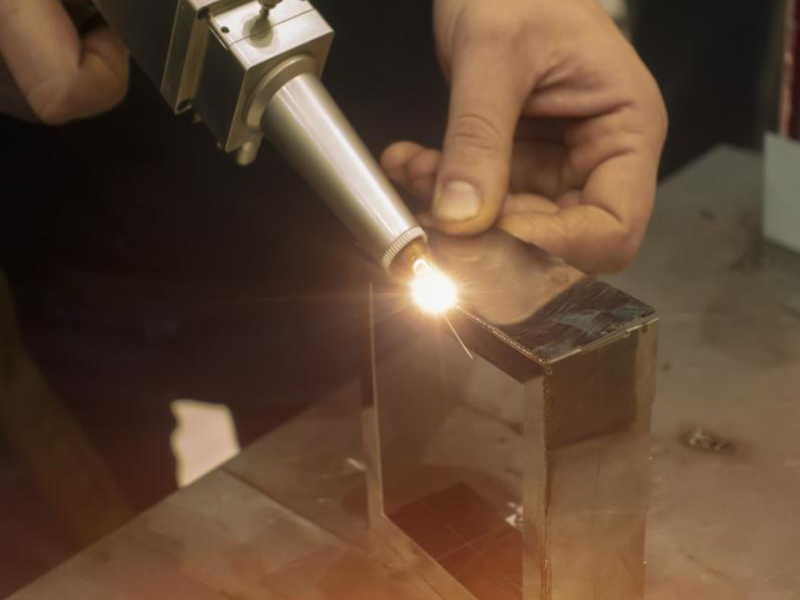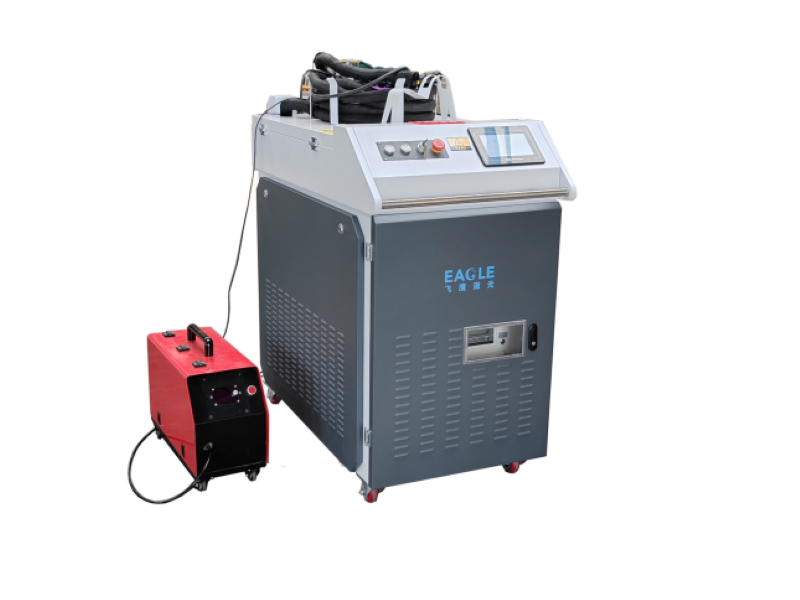At present, in the manufacturing industry, the common processing method has changed from traditional contact processing to laser non-contact processing. The common equipment in laser processing is laser welding machine. Because laser welding machine has significant advantages such as high welding efficiency, small weld and small spot, it is deeply loved by many customers. The more it is used, the more corresponding faults will occur.
Of course, any machine has the possibility of failure. In order to make the laser welding machine work better, reduce the number of failures and increase its work efficiency, we must understand the problems that should be paid attention to during its operation and the handling methods of failures. This article mainly explains the common troubleshooting methods of laser welding machine:

1. Why does crack appear during laser welding machine welding?
Crack type and formation mechanism:
1. Thermal crack:
Also known as intergranular crack, it is mainly generated during the solidification process of the weld.
Causes of formation:
The material has high impurity content (such as low melting point impurities such as S and P), which segregate at the grain boundary to form eutectic, reducing the grain boundary strength;
The grains are coarse and the grain boundaries are weak;
The welding heat input is large, resulting in a long solidification time and sufficient grain growth;
The weld constraint stress is large, and cracking occurs during cooling and shrinkage.
Typical characteristics:
Usually expand along the grain boundary;
Mostly appear in the center of the weld or near the fusion line.
2. Cold cracks:
Occur during the cooling process after welding is completed, and appear after a delay of several hours or even days.
Causes of formation:
The weld hardening structure (such as martensite) is formed, which is highly brittle;
High hydrogen content (wet welding wire, humid environment);
High welding stress;
No preheating or insufficient preheating before welding.
Typical characteristics:
The direction is mostly horizontal or along the heat affected zone;
It is delayed and unpredictable.
3. Reheating cracks:
Grain boundary weakening: alloy elements (such as V, Nb, Ti, etc.) precipitate at the grain boundary to form brittle phases; multiple thermal cycles lead to loose grain boundary structure.
Temperature sensitive range: When reheated to 450~650°C (or the sensitive temperature zone of a specific material), the grain boundary embrittlement is significant and cracks are easily induced.
Residual stress effect: The original residual tensile stress in the heat-affected zone is released during heating, causing crack propagation.
Crack characteristics:
Mostly occur in post-weld heat treatment or the middle layer of multi-layer multi-pass welding;
Located in the heat-affected zone, in the form of transverse cracks;
Often extend along the grain boundary, with delay;
Difficult to detect, with great harm.
Analysis of factors affecting crack formation:
Material composition:
Material such as high carbon steel, high-strength steel, aluminum alloy, nickel-based alloy, etc. have high crack sensitivity;
Impurity elements (S, P, B, etc.) are easy to segregate at the grain boundary to form brittle structure.
Welding heat input:
Excessive heat input: slow cooling of weld, coarse grains, and increased crack tendency;
Excessive heat input: poor weld fusion, forming stress concentration zone.
Welding speed:
Excessive speed: insufficient heat, insufficient penetration, poor joint bonding;
Excessive speed: expansion of heat-affected zone, increase in thermal cycles, and high risk of grain boundary embrittlement.
Weld structure design:
Areas with complex structures or stress concentration (such as thick plates and cross joints) are more prone to cracking;
Irrational design leads to large deformation and residual stress after welding.
Assembly gap:
Excessive gap: difficult fusion, insufficient filling, pores, unfused and microcracks;
Uneven gap: local heat input fluctuations and stress concentration.
Preheating/post-heat treatment:
Insufficient preheating before welding: fast cooling, easy to generate brittle structure (such as martensite);
Improper post-weld heat treatment: failure to slow cooling according to the process or insufficient holding time, inducing cracks.
Environmental humidity/hydrogen content:
Welding environment is humid, welding materials contain water, and the surface of the parent material has water or rust, which will increase the hydrogen content;
Hydrogen atoms diffuse into the weld, causing hydrogen-induced cracks (especially cold cracks).
Specific solutions for laser welding machine cracks:
1. Material selection:
Select materials with strong crack resistance;
Reduce the content of impurities such as S and P in the material;
Use low-hydrogen welding materials;
For aluminum alloys, select alloy models with good welding performance.
2. Adjust the welding parameters of the laser welding machine:
Appropriately reduce the laser power or heat input to avoid excessive weld pool;
Reasonably set the welding speed to avoid excessive heat-affected zone;
Use a decreasing heat input strategy for multi-pass welding;
Control the spot size, focus position and welding depth.
3. Improve the structural design:
Reduce constraints at the weld (such as free ends or reasonable transitions);
Optimize the joint form, such as choosing butt joints instead of T-joints;
Maintain a reasonable assembly gap to avoid empty welding or incomplete penetration.
4. Pre-welding/post-welding treatment measures
Preheating before welding: Especially for high-strength steel and high-carbon steel, it is recommended to preheat to 100~300°C;
Insulation or annealing after welding: Slow cooling to eliminate stress;
Control ambient temperature and humidity to avoid hydrogen-induced cracking.
5. Introduction of auxiliary processes:
Laser-arc hybrid welding: Reduce the peak heat input;
Use back shielding gas (such as argon) to reduce oxidation;
Use swing welding to increase weld width and reduce stress concentration.
6. Detection and monitoring:
Real-time temperature monitoring system;
Online crack detection technology such as acoustic emission and infrared thermal imaging;
Use post-welding non-destructive testing methods (UT, PT, RT) to check crack risks.

2. The laser welding machine does not have enough penetration:
1) The laser energy is not enough, which can be solved by increasing the pulse width and current.
2) The defocus amount of the focusing mirror is incorrect, and the defocus amount should be adjusted to a position close to the focal point (but no spatter should be generated).
3. Laser welding machine laser beam weakens during welding:
1) Cooling water is polluted or has not been replaced for a long time. Replace the cooling water and clean the UV filter glass tube and xenon lamp to solve the problem.
2) The focusing lens or the laser resonant cavity diaphragm is damaged or contaminated, and should be replaced or cleaned in time.
3) The laser in the main optical path is offset. Adjust the full reflection and semi-reflection diaphragms in the main optical path. Use photo paper to check and adjust the circular spot.
4) The laser is not output from the center of the copper air nozzle under the focusing head. Adjust the 45-degree reflection diaphragm to make the laser output from the center of the air nozzle.
5) The optical shutter is not fully opened. Check and add lubricating oil to the optical shutter connector to make the connector mechanically smooth.
This article mainly explains why cracks appear during laser welding machine welding? And specific solutions. The problems encountered by the latter two laser welding machines are briefly introduced, but if you want to update the in-depth understanding, please contact us, we will discuss with Eagle technicians in more depth, and then share with you!
The above are the three common ways to deal with laser welding machine faults. I hope it can be helpful to you.
If necessary, please contact our Eagle Foreign Trade Sales Department for communication and purchase!

